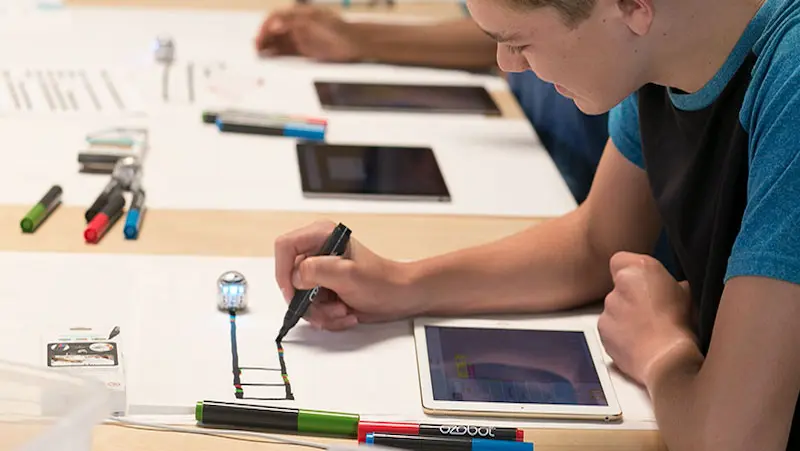In the pursuit of academic success, one cannot underestimate the profound significance of effective study habits. These habits are the foundational building blocks upon which academic achievement is constructed. From excelling in school assignments to acing examinations and mastering complex subjects, effective study habits are the secret weapon that empowers students to reach their full potential.
They are not merely a matter of routine or convenience; rather, they are the key to unlocking the doors of knowledge, comprehension, and ultimately, success. In this exploration, we will delve into the vital role that effective study habits play in shaping academic outcomes and how they impact the educational journey of students at all levels.
Table of contents
Set Clear Goals
Imagine embarking on a journey without a destination in mind. You wouldn’t know which direction to take, and you might end up wandering aimlessly, feeling lost and demotivated. Just like in life, setting clear goals is the compass that provides direction and motivation to our endeavors.

1. Clarity and Focus
Setting clear goals provides us with a sense of direction. It’s like charting a roadmap to our desired destination. When we know exactly what we want to achieve, we can focus our time, energy, and resources on the tasks that will get us there. This clarity helps us avoid distractions and stay on course.
2. Motivation and Commitment
Goals are powerful motivators. They provide a sense of purpose and a reason to push ourselves beyond our comfort zones. When we set clear, achievable goals, we are more likely to stay committed and motivated to work towards them.
Psychologically, achieving small milestones along the way can release dopamine, the “feel-good” neurotransmitter, which reinforces our commitment and enthusiasm. T
3. Measure of Progress
Goals act as benchmarks for progress. Without them, it’s challenging to gauge how far we’ve come and how much further we need to go. Setting specific, measurable goals allows us to track our advancement objectively.
4. Overcoming Challenges
In any endeavor, obstacles and setbacks are inevitable. Clear goals can serve as a source of resilience during tough times. When you encounter challenges, your goals act as a reminder of why you started in the first place. They can help you refocus, adapt your strategy, and persevere in the face of adversity.
5. Increased Accountability
Setting clear goals also fosters accountability. When you have defined objectives, you’re more likely to take responsibility for your actions and decisions. Accountability not only helps you stay on track but also enhances your credibility and reputation, whether in your personal or professional life.
Create a Study Schedule

1. Prioritisation of Tasks
A study schedule forces you to sit down and assess your academic responsibilities. By listing all your coursework, assignments, and exams, you’ll gain a clearer understanding of what needs to be done and when. This prioritization is crucial because it helps you identify which tasks are most important and require immediate attention.
2. Optimal Time Allocation
One of the biggest challenges students face is allocating the right amount of time to each subject or task. A study schedule enables you to allocate your time wisely, ensuring that you devote enough attention to each course. It prevents the common pitfall of cramming or overloading on one subject while neglecting others.
3. Reduces Stress and Anxiety
Without a study schedule, students often find themselves rushing to complete assignments or study for exams at the last minute. This leads to elevated stress levels and anxiety, which can negatively impact your overall well-being and academic performance.
4. Enhanced Productivity
Having a study schedule in place helps create a sense of discipline and routine. When you know you have dedicated study time scheduled, you’re more likely to stay on track and avoid distractions. This increased focus and productivity can translate into more efficient studying, leaving you with more time for other activities for kids and reducing the chances of burnout.
5. Improved Time Management Skills
Creating and sticking to a study schedule is a practical way to develop essential time management skills. These skills are not only valuable in your academic journey but are also highly transferable to your professional life.
Find Your Ideal Study Environment

Creating the Ideal Study Environment
1. Clutter-Free and Organized Space: A cluttered space can clutter your mind. A tidy, well-organized study area can help you feel more in control of your surroundings, reducing distractions and enhancing concentration.
2. Comfortable Seating: The chair you sit in and the desk you use can have a significant impact on your comfort and thus your productivity. Ergonomically designed furniture can prevent discomfort and help you stay focused for longer periods.
3. Proper Lighting: Lighting can affect your mood and energy levels. Natural light is ideal, but if that’s not possible, opt for bright, white light that mimics natural sunlight. Avoid harsh fluorescent lighting, as it can cause eye strain and fatigue.
The Impact on Concentration
1. Fostering Focus: A well-designed study environment fosters focus by reducing external stimuli that could divert your attention. When your surroundings are organized and optimized for learning, your brain can concentrate better on the task at hand.
2. Reducing Cognitive Load: A cluttered and disorganized space adds to your cognitive load as your brain has to constantly process irrelevant information. This extra cognitive load can decrease your capacity to concentrate on your studies.
3. Creating a Routine: A dedicated study environment can become a cue for your brain that it’s time to focus. Over time, this routine helps improve your concentration when you enter that space.
The Impact on Productivity
1. Efficiency and Speed: When your study environment is tailored to your needs, you can work more efficiently and complete tasks more quickly. This leads to higher productivity.
2. Reducing Interruptions: A well-structured environment helps minimize interruptions, enabling you to stay on task and avoid time-wasting activities.
3. Enhanced Motivation: A visually appealing and comfortable study environment can boost motivation. When you enjoy your workspace, you are more likely to be enthusiastic about studying.
Use Active Learning Techniques

Summarizing
Summarizing is a valuable skill that can transform the way you learn and retain information. It involves condensing complex ideas into concise, digestible forms.
Here’s how you can utilize summarization for active learning:
1. Note-taking: During lectures or while reading, jot down key points and main drawing ideas for kids. Then, transform these notes into concise summaries. This process forces you to process and understand the material actively.
2. Flashcards: Create flashcards with questions on one side and answers on the other. When studying, quiz yourself with these flashcards to reinforce your understanding and recall of key concepts.
3. Mind Mapping: Use mind maps to visually represent the relationships between different concepts. This can help you organize information and see the bigger picture.
Teaching Others
Teaching someone else is a powerful method to reinforce your own learning. When you teach others, you must understand the material thoroughly to explain it effectively.
Here’s how you can apply this strategy:
1. Study Groups: Join or create study groups with classmates. Take turns teaching each other topics you’ve covered. This not only helps you solidify your knowledge but also exposes you to different perspectives and insights.
2. Tutoring: Consider becoming a tutor for your peers or seeking help from a tutor if you’re struggling with a specific subject. Tutoring forces you to delve deep into the material to provide clear explanations.
3. Online Platforms: Share your knowledge on platforms like blogs, forums, or social media. Engaging in online discussions or creating educational games for kids content can enhance your understanding and encourage active learning.
Utilize Technology Tools

1. Evernote: Evernote is a versatile note-taking app that allows you to create, organize, and access your notes from anywhere. You can store text, images, and even voice recordings, making it perfect for keeping track of lectures, research, and class materials. With its powerful search feature and tagging system, finding the information you need is a breeze.
2. OneNote: Microsoft’s OneNote is another fantastic note-taking application. It offers a user-friendly interface and integrates seamlessly with other Microsoft Office products. OneNote’s flexibility allows you to create digital notebooks for different subjects, making it easy to organize your study materials.
3. Trello: Trello is a project management tool that can help you stay organized with its visual board games for kids, lists, and cards. You can create boards for each course or project and use cards to list tasks, due dates, and progress. This app is particularly useful for managing group projects and collaborative assignments.
4. Forest: If you find yourself easily distracted by your smartphone while studying, Forest can be a game-changer. It encourages you to stay focused by planting a virtual tree that grows as long as you don’t use your phone. Over time, you can build a forest of productivity, and the app even partners with a real-world tree-planting organization.
5. Pomodone: The Pomodoro Technique is a popular time management method that involves working in focused intervals followed by short breaks. Pomodone is a Pomodoro timer app that helps you implement this technique effectively. You can customize work and break durations to match your preferences and study style.
6. Quizlet: Quizlet is an excellent tool for creating and studying flashcards. You can either use existing flashcard sets or create your own, and Quizlet offers various study modes, including games for kids and quizzes, to make learning engaging and effective.
7. Grammarly: Writing is an integral part of academia, and Grammarly is your personal writing assistant. It checks for grammar and spelling errors, suggests improvements in sentence structure, and even provides clarity and engagement suggestions, helping you craft impeccable essays and reports.
Seek Help and Collaboration

The Power of Seeking Help
1. Accelerated Learning: One of the most significant advantages of seeking help is the acceleration of the learning process. When students seek clarification on concepts they find challenging, they can overcome obstacles more quickly, allowing them to progress at a faster rate.
2. Increased Confidence: Seeking help builds confidence. When students realize they can overcome difficulties with assistance, they become more self-assured. This newfound confidence can have a positive affirmations for kids ripple effect on various aspects of their lives, including their academic performance.
3. Improved Problem-Solving Skills: Asking for help provides an opportunity for students to refine their problem-solving skills. They can learn from others’ approaches and apply these strategies to similar challenges in the future.
4. Enhanced Communication Skills: Seeking help also nurtures communication skills. Whether it’s discussing concepts with teachers, collaborating with classmates, or interacting with tutors, students learn how to express their thoughts and questions effectively.
Encouraging Students to Seek Help
1. Provide Resources: Schools and universities should ensure that students have access to resources for academic support. This includes offering tutoring services, hosting study groups, and maintaining open office hours for teachers and professors.
2. Peer Support: Encourage peer-to-peer support. Sometimes, students find it more comfortable to ask classmates for help. Promote collaboration and teamwork in the classroom to foster a sense of community and support among students.
3. Set Realistic Expectations: Help students set realistic academic goals. Unrealistic expectations can lead to frustration and discourage seeking help. Teach them that seeking assistance is a part of the learning games for kids process.
4. Celebrate Effort: Recognize and celebrate students’ efforts in seeking help and improving. Positive reinforcement can motivate students to continue seeking assistance when needed.
Conclusion
In conclusion, mastering your studies is not just about hitting the books for kids harder; it’s about studying smarter. We’ve covered some essential online safety tips for kids to help you ace your studies. Remember to create a conducive study environment, stay organized, break your study sessions into manageable chunks, engage actively with the material, and seek help when needed. With dedication and the right strategies, you can reach your academic goals and excel in your studies. Good luck on your journey of learning and growth!
Also, BrightChamps provides a comprehensive platform for learning about money for kids, offering interactive and engaging resources that teach financial literacy, budgeting, saving, and other essential money management skills.
Frequently Asked Questions
A1. Effective study techniques: Active learning, summarizing, flashcards, and spaced repetition.
A2. Improve concentration: Minimize distractions, set a schedule, and practice mindfulness.
A3. Study balance: Take short, frequent breaks for better retention.
A4. Time management: Use a planner, prioritize tasks, and avoid procrastination.
A5. Productive environment: Quiet, organized space with good lighting.
A6. Retaining information: Teach others, use mnemonic devices, and practice retrieval.


 We are an army of educators and passionate learners from BrightChamps family, committed to providing free learning resources to kids, parents & students.
We are an army of educators and passionate learners from BrightChamps family, committed to providing free learning resources to kids, parents & students.













